#start galéria budapest
Text
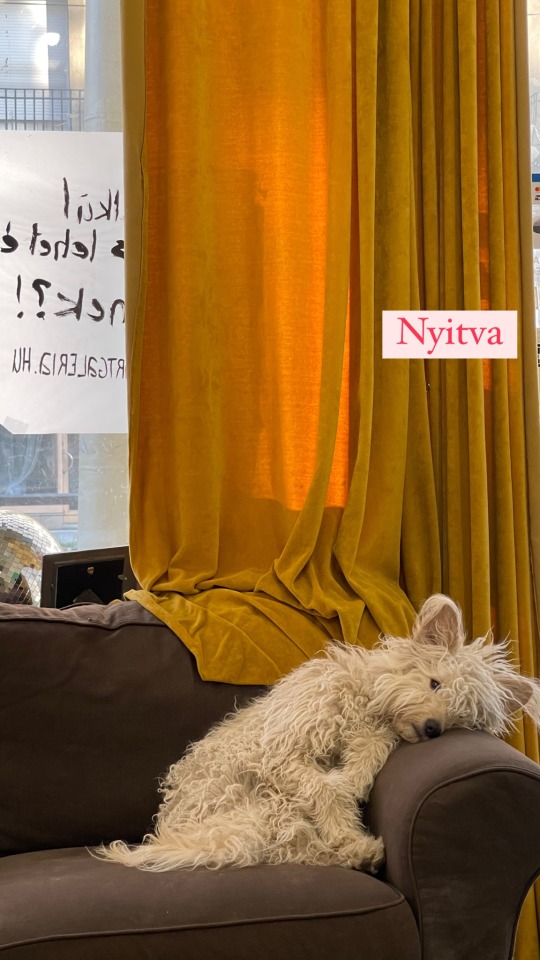
7-ig.
123 notes
·
View notes
Text

tegyük külön posztba szerintem
2023/12/24 Start Galéria szentesti tumblikarácsony @brgzmpff -nél.
érdeklődés infók a szervezőnél
31 notes
·
View notes
Text
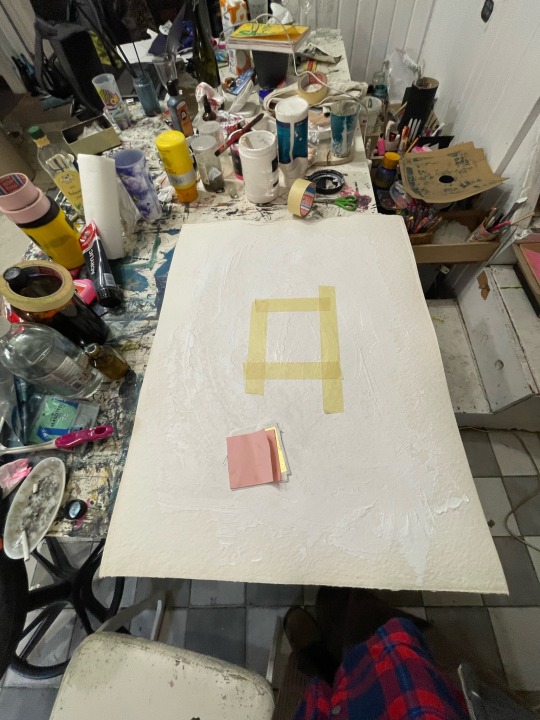
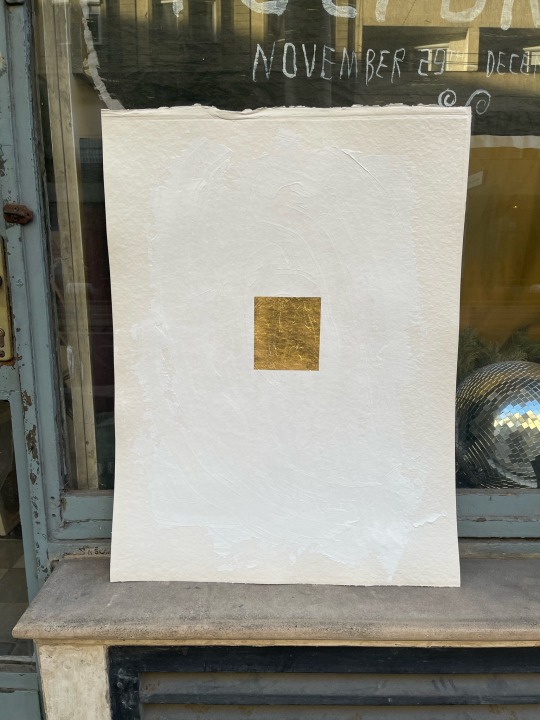
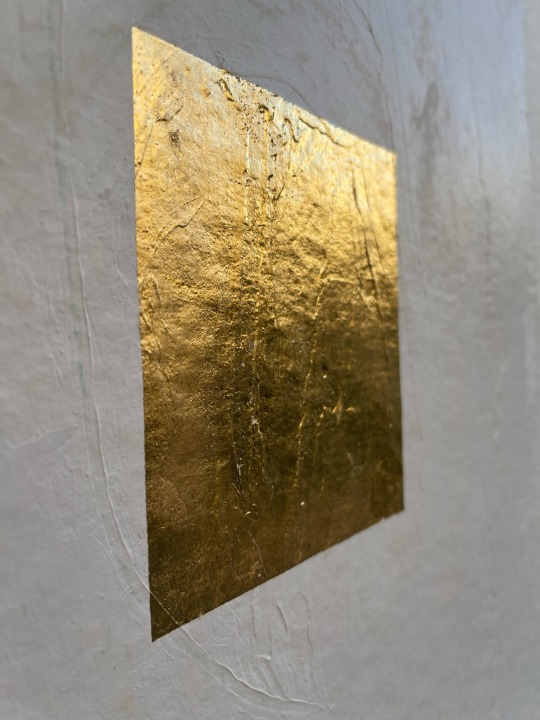
White and gold
Acrylic on vintage super heavy paper
80x60 cm
2024.01.25.
12 notes
·
View notes
Text
És nem is írtam, hogy voltam a Start Galéria kiállításmegnyitón / szülinapon (de jobb későn, mint soha)
a kezdés után alig kicsivel már egy gombostűt sem lehetett elejteni
de mivel mindenki kedves, vidám és udvarias volt, ez nem okozott gondot :)
az emberek elég nagy százaléka vicces / színes / menő pulcsit vett fel az alkalomhoz / hely szelleméhez illően
összebarátkoztam egy tumblis lánnyal, akin pl. ciklámenszínű pulcsi volt
meglepően jól lehetett gyönyörködni a képekben is
vagy hát amennyit esetleg levont a műélvezetből a tömeg, annyit hozzáadott, hogy lehetett beszélgetni a képekről másokkal :)
különleges képességem, hogy akkor is képes vagyok nagyon elanyátlanodottnak kinézni, amikor csak szemlélődök. azt hiszem, ez inkább bug, mint feature, úgyhogy dolgozom rajta... de köszönöm azoknak, akik rákérdeztek, mert ők hátha egyszer kiszúrnak egy tényleg elanyátlanodott embert. <3
+BÓNUSZ FUN FACT: volt egy srác, aki full hasonlított a tanszékvezetőmre, csak fiatalabb kiadásban, úgyhogy egy pillanatra rendesen meg is ijedtem. asszem, rossz a lelkiismeretem, amiért nem járok be az egyetemre :D
1 note
·
View note
Photo
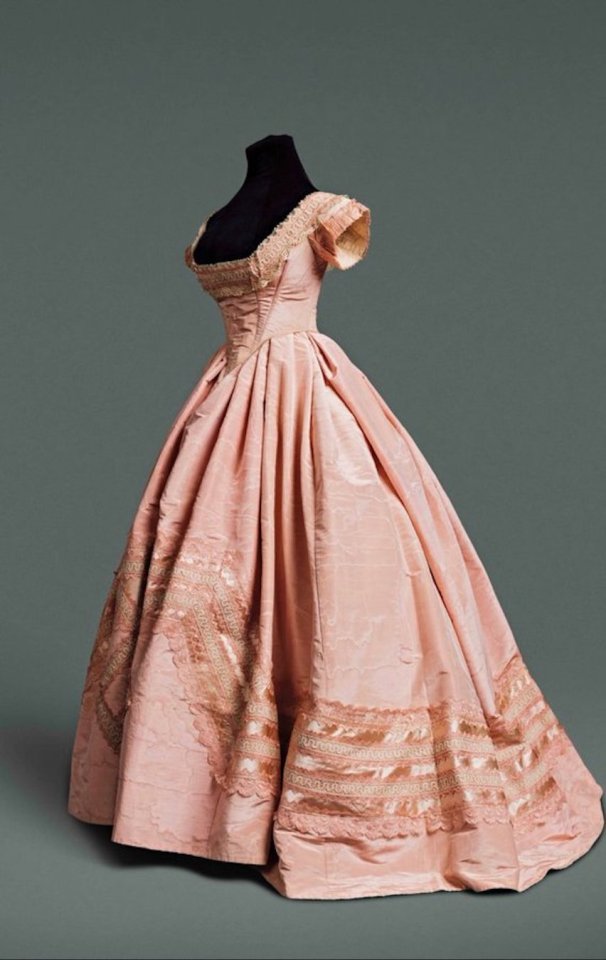
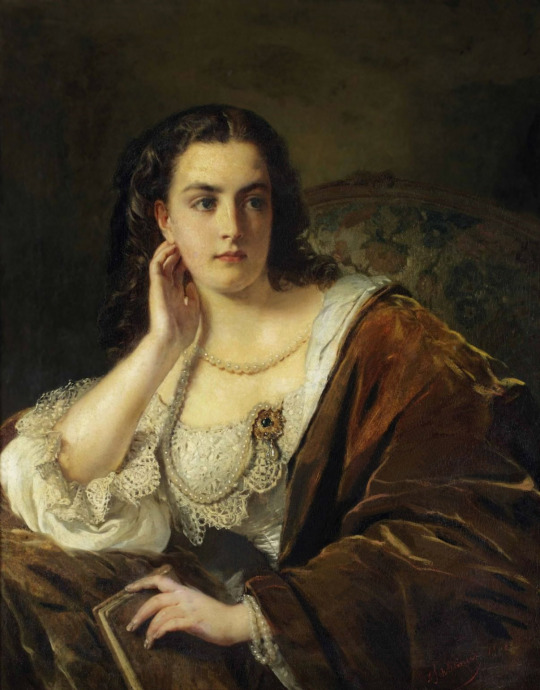
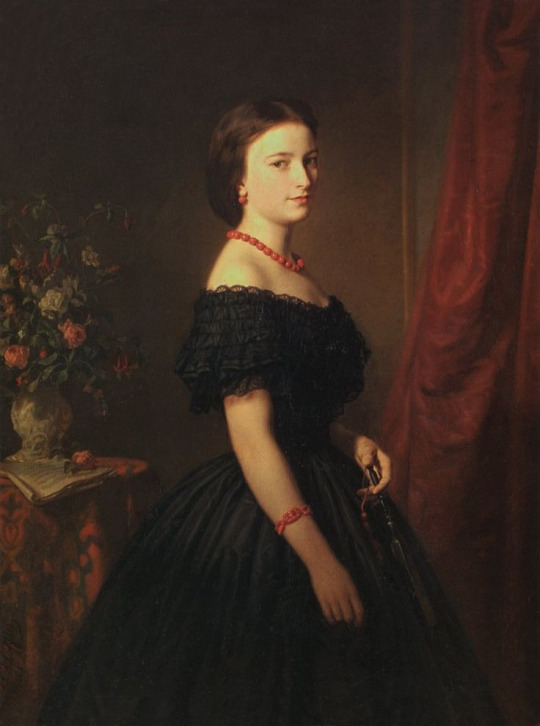
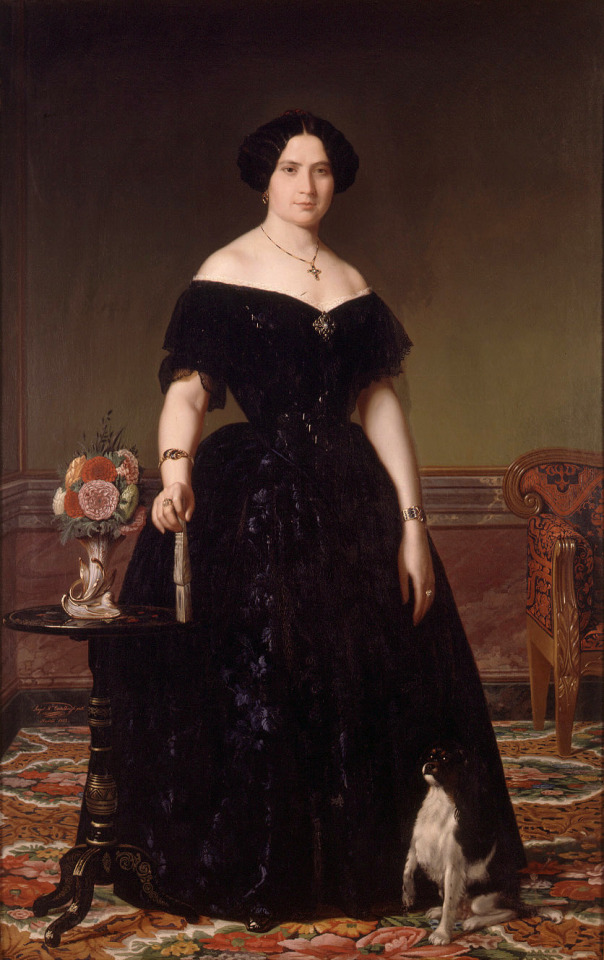

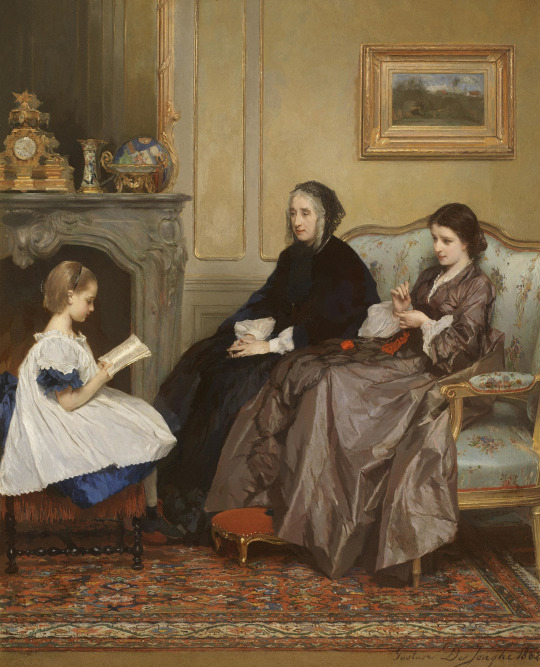
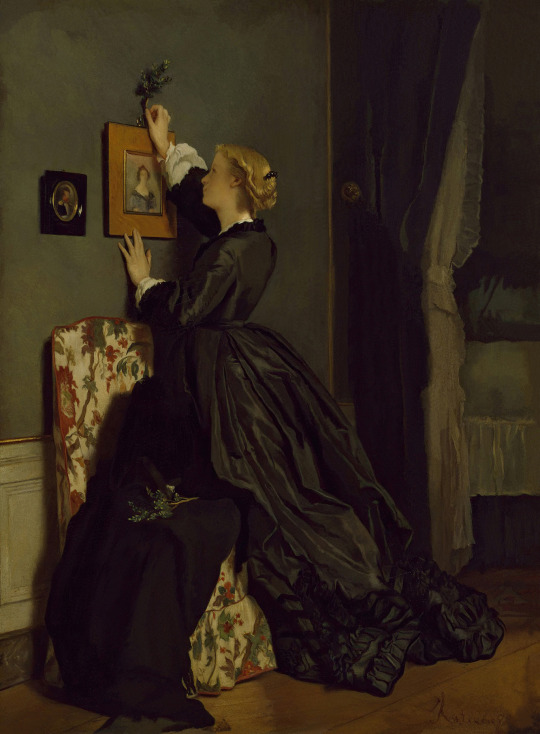
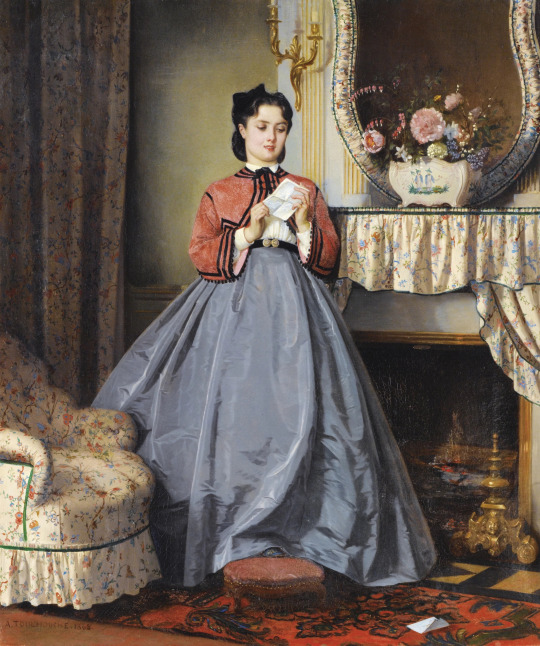
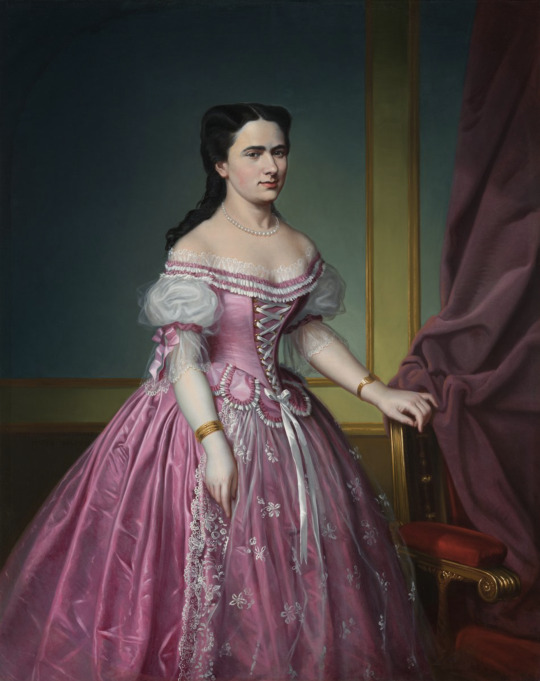
Back to the 1860s -
Top row 1860 Ballgown (location ?). From tumblr.com/royaland; enlarged by half 852X1350.
Second row 1860 La Contemplation by Henri-Guillaume Schlesinger (location ?). From tumblr.com/artthatgivesmefeelings 1206X1540.
Third row left 1861 Maria Sawiczewska by Leopold Loeffler (location ?). From tumblr.com/ artthatgivesmefeelings; fixed larger spots & edges w Pshop 736X989.
Third row right ca. 1860 Doña Antonia Roca by Ángel María Cortellini y Hernandez (Museo de Bellas Artes de Valencia - Valecia, Valencia, Spain). I found this before I started recording sources - before 2010; fixed spots & flaw w Pshop 836X1328.
Fourth row left 1862 The lesson, mother and her daughter in a bourgeois interior by Gustave Léonard de Jonghe (location ?). From tumblr.com/artthatgivesmefeelings; fixed spots & large smudge w Pshop 1920X1557.
Fourth row right 1862 The recital by Gustave Léonard de Jonghe (location ?). From Wikimedia; fixed spots w Pshop 1657X2047.
Fifth row 1862 Palm Sunday by Alfred Stevens (location ?). From tumblr.com/eirene; fixed spots & flaws w Pshop 1367X1859.
Sixth row left 1863 The Love Letter by Auguste Toulmouche (Sotheby's - Auction PF1209 Lot 135). From their Web site; too many flaws to fix 2836X3391.
Sixth row right 1865 Erzsébet Borsay by Ferenc Klimkovics (Magyar Nemzeti Galéria - Budapest, Hungary). From en.mng.hu/artworks/portrait-of-erzsebet-borsay/1894X2390.
#1860s fashion#early Victorian fashion#Second Empire fashion#square décolletage#V waistline#full skirt#Henri-Guillaume Schlesinger#lace bertha#long hair#Maria Sawiczewska#Leopold Loeffler#coral jewelry#off shoulder V neckline#Antonia Roca#Ángel María Cortellini y Hernandez#Gustave Léonard de Jonghe#hair net#V neckline#net mantle#petticoat#shoes#lace cap#long puffed sleeves#Alfred Stevens#hair jewelry#Auguste Toulmouche#zouave jacket#blouse#belt#Erzsébet Borsay
40 notes
·
View notes
Text
Nemtom futott-e itt ma,
de @brgzmpff galériája online már nyittal van és hát azt kell mondjam, én vagyok a legeslegelső vásárlója a webshopnak meg a galériának, tik meg engedjetek meg magatoknak szép dolgokat bekeretezve, innen:
My kind of sugardaddying.
80 notes
·
View notes
Photo




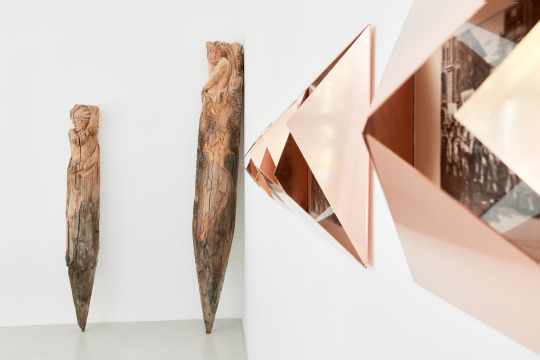





MI, 2020
With Andreas Fogarasi at Galéria Vintage, Budapest
Atlas/Pilot, 2016/2020
Pine trunks (supporting pillars from underneath the Berlin City Palace), carved
214x29 cm
280x39 cm
267x30 cm
Christian Kosmas Mayer’s carved pine trunks were unearthed in 2012, after the demolishing process of Berlin’s Palast der Republik, a symbolic building of the GDR, erected in the seventies. They were originally submerged in the swampy soil 300 years prior, supporting the enormous structure of the Prussian Berlin Palace that once stood there. Mayer purchased some of these now functionless supporting elements at an auction. Based on photos of the Atlas figures that were once adorning the ornate stairwell of the palace, he had the sculpture details carved into the pillars in a smaller, rougher form. The memory of the enormous figures, in this way, is closely linked to the history of the urban palace that was blown up in 1950, and recently partly reconstructed as a museum – and, in a more general sense, with the erasability and rewritability of memory. With his carved wooden pillars, the aim of the artist – who simultaneously appears in the role of the purchaser and the commissioner of the work – is not so much to commemorate an important historical event with his negative obelisks, but to memorialise an erased and disappearing past, emerging to the surface in ever newer forms. The metamorphoses of the representational patterns of past systems become especially timely today in cases where the powers that be, assuming a specific perspective of the past, dress their new buildings in “old clothes” and use them as tools for politicising history.
The examination of the morphology of the past and present constitutes a basic element of both Fogarasi and Mayers’ art practice. In works by the latter artist, history and the present appear to layer on top of one another almost like a frottage, where, with every subsequent copy, the original sign and the information contained therein are transformed. In this way, the process of creation is rendered visible. Andreas Fogarasi primarily focuses on the internal mechanisms of culture. He lifts images that seemingly lost their significance out of oblivion. He zooms in on city structures and buildings, which, with time, lose their original meaning. The works of both artists share the element of preservation and the strategy of reprocessing, an examination of the relationship between creativity and power, and the raising of awareness about entropy, which can also be experienced in culture. In a world that is falling apart, Fogarasi and Mayer seek the possibility of slowing down and of intermediate positions – between a fixed vantage point and shifting perspectives, accidental discoveries and methodical research, dismantling and construction. Their present exhibition, which takes details that have been buried or forgotten and uses them as a starting point, explores such general concept pairs as concealment and visibility, erasure and rewriting, or the disappearance and preservation of knowledge. Both artists are interested in the invisible structures of, for instance, power or time, as well as in the mutability or constancy of frameworks and supporting elements – and, by taking these as a premise, the intersection of the past and present.
Excerpt from the press text by József Mélyi
All photos: BIRÓ Dávid
Courtesy of Vintage Galéria
1 note
·
View note
Photo
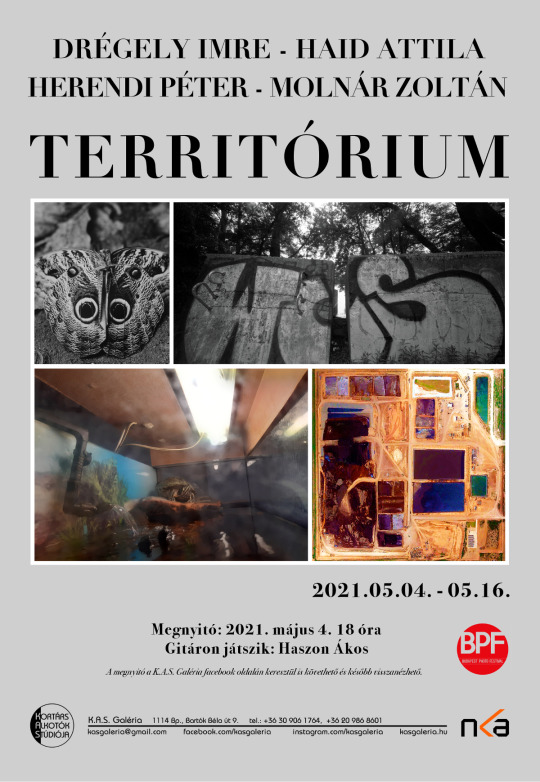
Drégely Imre - Haid Attila - Herendi Péter - Molnár Zoltán
TERRITÓRIUM
2021.05.04. - 05.16.
Megnyitó: 2021. május 4. 18 óra
Gitáron játszik: Haszon Ákos
A megnyitó a K.A.S. Galéria facebook oldalán keresztül is követhető és később visszanézhető.
Territórium, mint felség-, és vadászterület
Korunkban, mikor úgy tűnik egyre kevésbé láthatóak, tapasztalhatóak a téri és időbeli, vagy akár a realitás és virtualitás közti határok, talán egyre fontosabb megvizsgálni, mit jelent ez az ősi, atavisztikus fogalom az embernek, mint biológiai lénynek. Önmaga által konstruált elképzelt tereket, időszeletekben vizsgálandó kísérleti terepet, bármilyen szegényes, de menedéket vagy kerítések mögötti magánszférát? Az előző kiállításaink során megkezdett közös gondolkodás, négy különböző fotográfus más-más nézőpontja segíthet a kérdés képi megválaszolásában, vagy továbbgondolásában.
///
Territory as a territory of sovereignty and hunting
In our age, when the boundaries between space and time, or even reality and virtuality, seem less and less visible, perhaps more important, it is increasingly important to examine what this ancient, atavistic concept means to man as a biological being. Imaginary spaces constructed by yourself, experimental terrain to be examined in time slices, any poor but sheltered or privacy behind fences? The common thinking started during our previous exhibitions, the different points of view of four different photographers can help to answer or think about the question visually.
A kiállítás a Budapest FotóFesztivál hivatalos programjának része.
Facebook esemény: https://www.facebook.com/events/2774166766229026
0 notes
Photo

SOCIALIST REALISM AND THE ART OF PROPAGANDA
The artistic style and movement of socialist realism goes hand in hand with propaganda. Above we see a North Korean socialist realist depiction of the glory of the regime and the veneration of the proletariat.
The Tate Modern in London defines the art term, movement and style of socialist realism: “The doctrine was formally proclaimed by Maxim Gorky at the Soviet Writers Congress of 1934, although not precisely defined. In practice, in painting it meant using realist styles to create highly optimistic depictions of Soviet life. Any pessimistic or critical element was banned, and this is the crucial difference from social realism. It was quite simply propaganda art, and has an ironic resemblance to the Fascist realism imposed by Hitler in Germany (see Entartete Kunst – degenerate art). Outside the Soviet Union, socialist artists produced much freer interpretations of the genre as the paintings on this page illustrate.”
Another great article from ArtNews entitled “A Second Life for Socialist Realism: European Museums Revise the History of Socialist Realism” is fantastic further reading on how the style and movement is and was so very important to disseminating and communicating government propaganda visually.
This painting by Marsel Van Oosten captures the exaltation of liberation and extols the virtues of the Soviet army in freeing Berin from the Nazi regime only to later suppress the nation, the eastern bloc an promote communist ideologies which were to take hold in East Germany and East Berlin throughout the next few decades.

This article in The Independent reviewing a 2015 exhibition in China entitled “Art of the state: Pyongyang propaganda posters to be exhibited in China” features some fantastic North Korean propaganda and socialist realism posters. The posters feature brilliant color and impeccable understanding of graphic design as it pertains to communicating the party line visually.
This below poster reads in Korean: “‘Love our machines like the anti-Japanese guerrillas who loved their weapons like the pupils of their own eyes’ (1990s)”
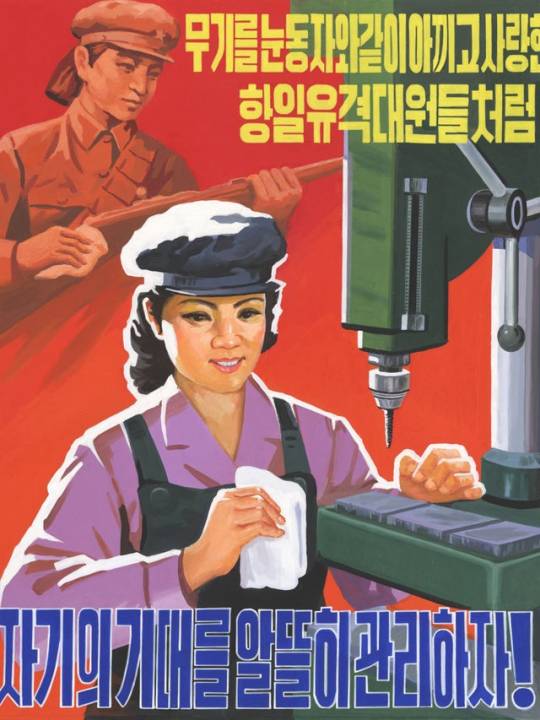
This below piece of North Korean propaganda is a poster designed to foster anti U.S. sentiment and directs the country to “crush U.S. Imperialism!”
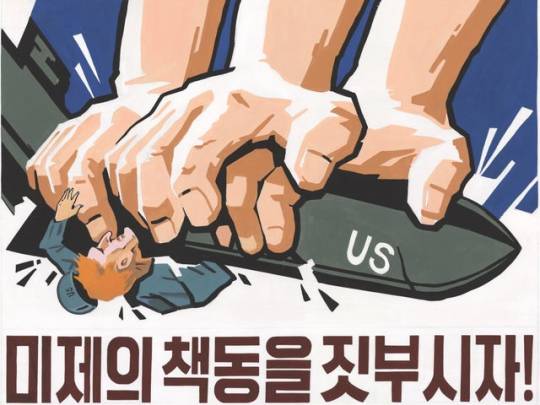
The following poster featuring a railway worker below reads ‘Three revolutions, let’s advance the march of grand construction with Chollima [a mythical winged horse or Pegasus] speed’ (late 2000s)
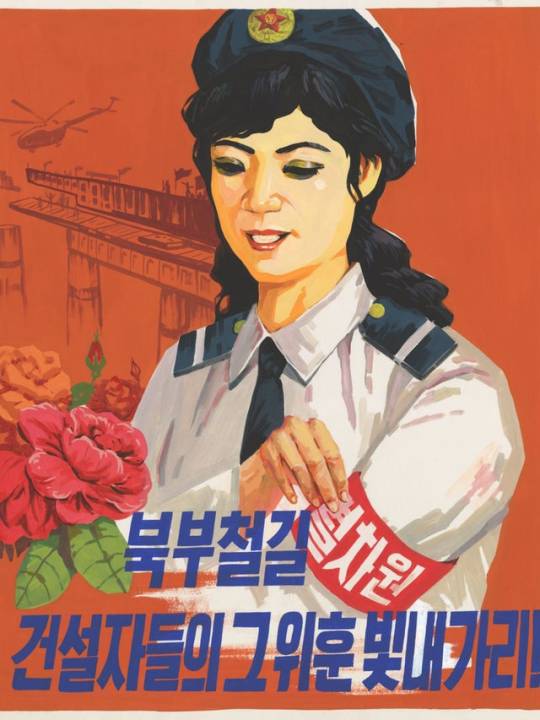
The above poster referenced the building of the new railways and features the worker holding a Kimjongilia flower that represents the dear leader Kim Jong-il.
A personal approach to propaganda:
As my family is Hungarian and was displaced at the hands of the incoming Soviet regime, my great grandfather Ferenc Nagy was forced to resign from the role of prime minister in 1947 for refusal to become a communist leader. This led to a puppet Soviet leader being installed until the “election” at the end of this term. The Budapest Poster Gallery is a gallery in Budapest and a treasure trove of vintage posters and the gallery exhibits and specializes in fine Hungarian vintage posters, propaganda posters and commercial graphic design from between 1890 and 1990. They write of this era of propaganda posters:
“The election in 1949 was the starting point of a new, dictatorial era. In the same year, a new constitution was written, which provided a strong basis for the communist regime. The power of the working class was supposed to be represented by the strong dictatorship of the Hungarian Workers’ Party, and its leader, Mátyás Rákosi. Meanwhile, the country was under the occupation of the Russian red army which took every aspect of the life of Hungarians under its control. These were the darkest years of communism, when the economy went thorugh a disastrous downfall and human rights were trampled. The period of this forceful dictatorship was ended by the revolution of 1956. Although the uprising did not manage to totally strike down the communist leadership, as a result of the extensive international awareness it had raised, the system slowly started to get softer, but only after the terrible initial retaliations following the revolt. ”
A poster by Istvan Czegledi reads: “Be the member of the Hungarian - Soviet Association!:
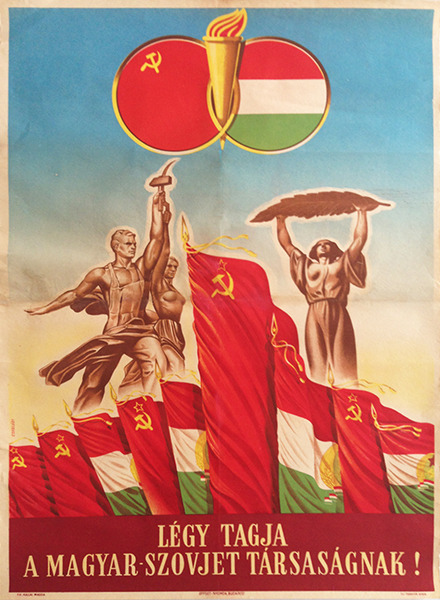
The Budapest Poster Gallery writes of the significance of this socialist realist movement and how restrictive it was upon artists, graphic designers and the arts in general and what could be communicated visually and how:
“The themes of painting were also restricted; they were mostly scenes from the workers’ idealized lives. In the 1930s and 1940s, there was a realist tendency present in Hungarian poster art. For example, Tibor Gönczi-Gebhardt designed posters with plastic and monumental forms, and simple political symbols. This tradition gained ground in the 1950s, because it matched the expectations of the new regime. The revolutionary modern poster design of the short democratic period between 1945 and 1949 rapidly vanished. The principles of the rigid and ceremonial soviet poster design became the guidelines for Hungarian artists. This change meant the near exclusivity of socialist realism. Photo-like realistic human figures appeared on the posters, who were mainly idealized typical characters: smiling workers, proud peasants, housewives and children with theatrical gestures, standing straight with their heads up, staring into the distance. They are often marching or working at factories, mines, or wheat fields, laying the foundation of the bright future.
The Magyar Nemzeti Galéria or the Hungarian National Gallery features this visually striking propaganda poster in their collection from 1948 by Gönczi-Gebhardt Tibor advertising the sham “unification congress” of the two parties combining into the Hungarian Socialist (Communist) Party and is reminiscent of the art-deco style:
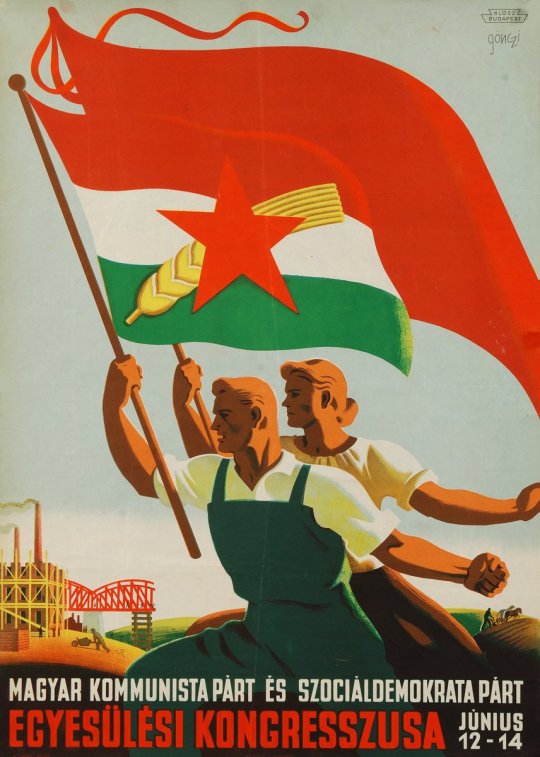
1 note
·
View note
Text

esemény itt
80 notes
·
View notes
Photo

A start :) YouTube, color tattoo videó: https://www.youtube.com/user/MrBarandi • Facebook offical tattoo studio: www.facebook.com/BarandiImre/ • Tattoo artist: ifj. Bárándi Imre, Hungary, Budapest • #budapest #magyarország#tetoválóművész#festmény #festmények #tattoomagazin #tattoomagazinok #tetoválómagazin #tetoválás #tetkó #budapest #tetoválások #kreatív #szép #tetovált #lány #csajok #nőitetko #tetováltcsajok #tetoválóminta #tetoválóminták #tetováltmodell #galéria #festménygaléria #tetoválásgaléria #kép #minta #tetoválásminták #tetoválásminta #bárándi #imre #18 #art #tattoo #hungary #tattoos #girl #tattooedgirls #sexy #lady #girls #tattoomagazine #beautiful #creative #picture #gallery #painter #painting #barandi #tattoomodel #tattoomagazine #tattowodesigns #tattoodesigns https://www.instagram.com/p/B2EBjEInRDD/?igshid=1o5ckw7rhhac9
#budapest#magyarország#tetoválóművész#festmény#festmények#tattoomagazin#tattoomagazinok#tetoválómagazin#tetoválás#tetkó#tetoválások#kreatív#szép#tetovált#lány#csajok#nőitetko#tetováltcsajok#tetoválóminta#tetoválóminták#tetováltmodell#galéria#festménygaléria#tetoválásgaléria#kép#minta#tetoválásminták#tetoválásminta#bárándi#imre
0 notes
Photo



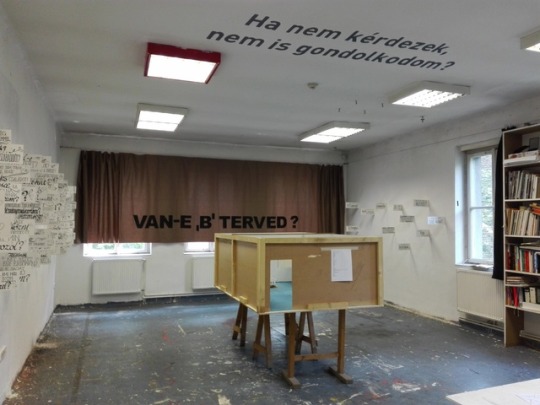
Munka vs. Iskola
Non-Random Galéria, XI. Bercsényi u. 7.
megnyitó: október 2, 20h
A Munka versus Iskola a Magyar Képzőművészeti Egyetem Intermédia Tanszék hallgatóinak tanulmányi kiállítása. A Műtárgykészítés című kurzus keretén belül, Sugár János vezetésével, 2015 óta minden tanévben a művészi tevékenységre felkészítő diáklét aktuális dilemmáit vették sorra. Az OFF-Biennálén a hallgatók ebben a témában megrendezett három kiállításának összegzése, egy térben való egységesítése látható, amelyhez 2-3 egyestés program kapcsolódik.
A Munka versus Iskola projektben többek közt azt a helyzetet elemezték, hogy a hallgatók nagy része a megélhetése finanszírozása érdekében tanulmányaikkal egyidőben dolgozni kényszerül. Mindez egy olyan egzisztenciális helyzetben tartja őket, ahol választaniuk kell, azaz a tanulmányaikat a munkavégzés akadályozza. Az egyszerre kéne két helyen lenni képtelenségét, az érdekek ütközését csak a tanulmányaikra fordított idő és energia csökkentésével tudják kivédeni. Ez az állapot rossz érzéseket és bizonytalanságot eredményez, amely magával vonja az alakoskodást, az egyéni megoldásokat, a korrumpálódást az egyetemi évek alatt. Ez a kompromisszum majd – jó esetben – hiányérzetté alakul a tanulmányaik lezárása után. Ebben a sokakat érintő helyzetben a munkavégzésről való gondolkodás egyfajta tabu, és ezt az elfojtást szeretnénk a művészeti tanulmányok részévé tenni.
A kiállításon látható lesz, többek között a 2016-os Ha nem kérdezek, akkor nem is gondolkodom? című évvégi kiállítás anyaga, illetve a Munka vs iskola témában folytatott kutatás.
Célunk, hogy a kiállítás tere egy aktív térré, diszkussziv bázissá alakuljon. Erre jó alapot ad a 2016/17-es tanévben a Müszi-vel közösen megpályázott Patterns Lectures (www.erstestiftung.org/patterns-lectures), melynek támogatásával a közös munka nagy részét arra szánhattuk, hogy a művészettől látszólag távoleső, gazdasági másképpgondolkodás témáival ismerkedjünk. Vendégelőadók sorát hívtuk meg, és a Munka vs Iskola program szellemében, az egyetemi előadásokat Müszi-ben szabadegyetem (https://muegyetem.wordpress.com/about) formájában is mindenki számára elérhetővé tettük. Ezt a folyamatot nagyjából az OFF biennálé idején zárjuk le egy kiadvánnyal, melynek bemutatása része lesz a kiállításunknak.
----------------------------------------------------------------------------------------------------------
Work vs Study
Work vs Study is an exhibition in which the Intermedia students of the Budapest Fine Arts University summarized the results of the Work vs Study program, led by prof. János Sugár. The program started in 2015 with the aim to analyze the actual dilemmas of being an art student in Hungary. The earlier phases of this program was exhibited at the previous end-of-semester shows, and now, during the OFF biennial it will be combined for one exhibition.
On the exhibition we present, beside others the 2016 exhibition entitled: If I don't Ask, I am Not Thinking? and the research program Work vs Study. Some live events will join to the program.
The academic year 2016/17 for the first and second year Intermedia students was determined by the fact, that the course of János Sugár succesfully applied, with the independent cultural center Müszi (http://muszi.org) together, for a so called Patterns Lectures (www.erstestiftung.org/patterns-lectures) grant. The joint project of a state financed art university and an independent, small, private institution was based on the one hand on the text Theseus' Ship (https://www.mail-archive.com/[email protected]/msg08564.html), and on the other hand on the experience of the Work vs Study program - and in the spirit of this, the university lectures were replicated in the Müszi, as a kind of a free-university which is available for everyone (https://muegyetem.wordpress.com/about). With the help of this grant we could invite guest lecturers, and we studied the seemingly faraway from art territories of radical rethinking of economical systems. This process will be closed with a publication, presented during the planned exhibition.
3 notes
·
View notes
Text
SZAKOS DÁNIEL - grafikus/graphic designer
Egyre csak gyűlnek a teleskiccelt kockás füzetei, egy tartalmas beszélgetés tölti fel a leginkább, a telefonjához nagyon kötődik - amióta ritkábban gördeszkázik, ezen tudja levezetni a trükk-éhségét, stílusa letisztult, tipográfia- és geometria központú, saját magát egy igazi typochonderként aposztrofálja.
He has more and more of squared notebooks full of sketches, a meaningful conversation can recharge him the most, he is very bound to his cell phone, since he is rarely skateboarding he can release his “trick-stress” this way, his style is clean and typography and geometry centered, he calls himself a real typochonder.

Dani asztala/Dani’s table.
1. Milyen típusú emlékek inspirálnak jobban: a jók vagy a rosszak?/What kind of memories inspire you the most the good or the bad ones?
Azt hiszem, mindkettő.
I think both.
2. Hogyan lendülsz túl az időszakos alkotói válságon?/How do you come over a temporary artistic crisis?
Mivel egyidejűleg általában több projekten is dolgozom, ha valamelyikben megakadok vagy eltévedek, azonnal van egy másik feladat, amihez már van a fejemben néhány ötlet. Eközben, a másik gondolatban érlelődhet. Ha egy hosszabb „szellőztetés” után is marad a válság, akkor azt csak sok-sok tervezéssel töltött óra oldja meg.
Since I am working on several projects at a time, if I get stuck with one of them, I already have another one to turn to with ideas about it already. Meanwhile, my thoughts about the other one can develop. If the crisis remains after a longer period of rest to it, then it can only be solved by a lot of hours spent on planning.
3. Kinek mutatod meg először az új alkotásodat?/Who sees your work first?
Változó, ahány projekt annyiféle feltétel, határidő és kimenetel. Van, amit csak megrendelő lát, de ha lehet, szeretem kikérni a barátok véleményét egy-egy fontosabb állomásnál. Bár azt gondolom, hogy jó kritikusa vagyok a munkáimnak, mégis hasznos a megerősítés menet közben, akár egy jó tervről van szó, akár egy elvetendő irányról.
It varies. Different kinds of projects with different kinds of condition, deadlines, and result. There are works that only the customer sees, but if I can, I like to ask for my friends`insights at specific stages of a work. However, I think I am a good critic of my own work it is good to have some encouraging in the process no matter whether it is a new project or a direction that should be rejected.

Francia kártya - Magyar Nemzeti Galéria
4. Mi a legkedvesebb gyerekkori emléked?/What is your favorite childhood memory?
Szép gyerekkorom volt, sok kedves emlékkel. Mostanában gyakran eszembe jutnak, főleg az általános iskolás éveim. Akkor a matek volt a kedvencem, de a számolások mellett a kreatív firkálgatásoknak is szorítottunk helyet a négyzetrácsos füzetben. Mikor az egyetemen az első betűm tervezésébe kezdtem, bevillantak az olyan rajzórai feladatok, mint a szabványbetű rajzolás milliméter-papíron, vagy újság címbetűből ABC-tervezés. Illetve az első – saját kézírásomon alapuló - script betűmnél az, hogy ötödikben „engedélyt” kaptam az irodalom tanárnőmtől, hogy nyomtatott betűkkel írhassak.
I had a beautiful childhood full of nice memories. Recently I have been thinking a lot about my elementary school years. Back then maths was my favorite subject, but besides counting, we also made space in our square notebooks for creative sketches as well. When I started to design my first letter at the university, I had flashbacks from art classes in elementary school when we in art class we ad to draw standard letters on graph paper, or when we had to design an ABC after the title letters in newspapers. When I designed my first script letter –based on my own handwriting- I thought about when I was in fifth grade and I got ‚permission‘ from my literature teacher to write with printed letters.
5. Mit érzel, amikor egy másik művész a tiédhez hasonló munkát készít?/What do you feel when someone does something similar to your work?
Nem találkoztam még ilyennel, de örülnék neki. Szerintem sokkal fontosabb az ötlet maga, mint az, hogy ki álmodta meg először. Mivel minden projekt egyedi megoldást igényel, próbálok az összes munkámban találni valami megismételhetetlent.
I’ve never seen something like that before, but I would be happy about it. I think the idea is more important than who executes it first. Since every project requires a specific solution, I try to find something unique in all of my works.
6. Mit szeretnél, hogy miről emlékezzenek majd rád?/What would you like to be remembered by?
Valami olyanról, ami inspirálja őket.
About something that inspires people.

Hommage à Kurtág György
7. Gyűjtesz valamit?/Are you collecting something?
Tudatosan nem, de a teleskiccelt kockás füzeteim gyűlnek…
Not consciously, but I have a lot of squared notebooks full of sketches.
8. Van-e napi rutinod?/Do you have a daily routine?
Nincs.
No.
9. Kedvenc tárgyad?/Favorite object?
Valamiért nem kötődöm túlságosan tárgyakhoz, a telefonom nélkül viszont nehezen vagyok meg. No nem azért, amiért szerintem manapság sokan - amióta ritkábban gördeszkázom, ezen tudom levezetni a trükk-éhségemet. Veszélyes, mert bár nem állok a deszkán, így is könnyen eltörhetem valamimet. Ha valaki űzi még ezt a sportot rajtam kívül, az keressen!
For some reason, I am not bound to objects. Although, I can hardly imagine life without my phone. Not for the same reason like most people need their phones nowadays, but because I can release some “trick-stress” on it since I am not skateboarding anymore. It is dangerous because even though I am rarely on a skateboard I can still break something of mine easily. If there s someone out there who feels the flow of this sport as well, contact me!
10. Hogyan fogsz neki egy új munkának?/How do you get started on new projects?
Rendet rakok az asztalomon, aztán ceruza és papír.
I clean my table and then a pencil and paper.
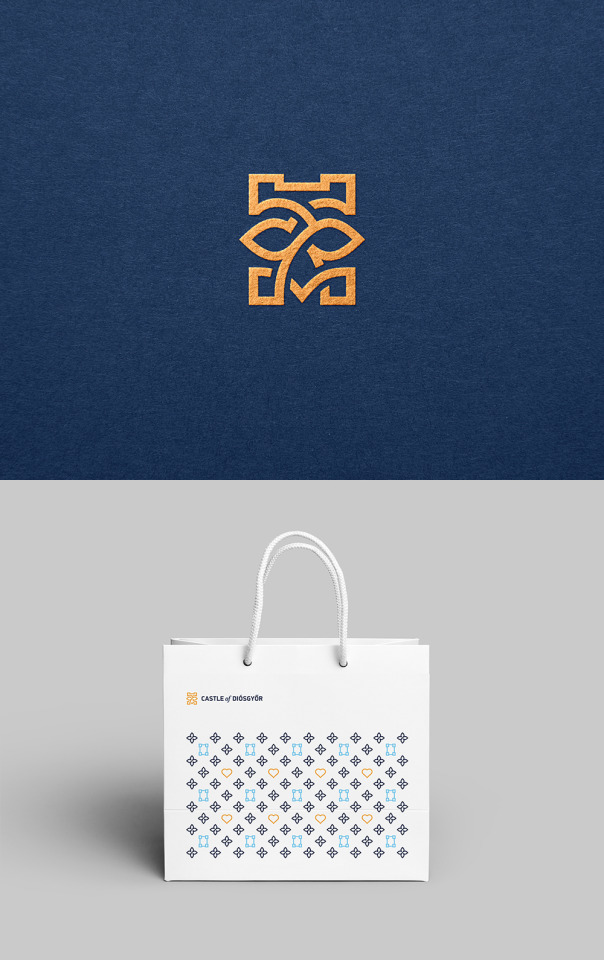
Diósgyőri vár logó - MGL Creative
11. Van egy jól körülhatárolható hangulat, amikor könnyebb számodra az alkotás?/Is there a specific mood, atmosphere which makes creating easier for you?
A legjobb érzés, amikor beugrik egy ötlet, és az ember már alig várja, hogy megvalósíthassa, ekkor bármilyen környezet megfelel, de a hosszabb session-ök esetében nem bánom, ha azok az estébe nyúlnak. Kint sötét, bent csak a monitorom és a lámpám világít, fülemben szól valami zene. Sehol egy e-mail, vagy telefonhívás.
The best feeling in the world is when an idea pops into your mind and you can’t wait to realize it. In this case, any mood and atmosphere will do, but in the case of a longer session, I don't mind if they extend into evenings. It is dark outside, inside the only light is provided by my monitor and my lamp, I listen to some music. No e-mails, no phone calls.
12. Mit szeretnél kifejezni az alkotásaidon keresztül?/What would you like to express through your artwork?
A „mi” a munkám során általában adott, viszont igyekszem mindig egy ötlet köré felfűzni a mondanivalót, legyen az akár egy logó, vagy egy reklámkampány. Ez lehet nyelvi, vagy grafikai poén egyaránt.
During ‘our‘ work it is pretty specific however, I try to build the meaning around an idea, regardless whether it is a logo or advertising campaign. This can be a lingual or graphical gag as well.
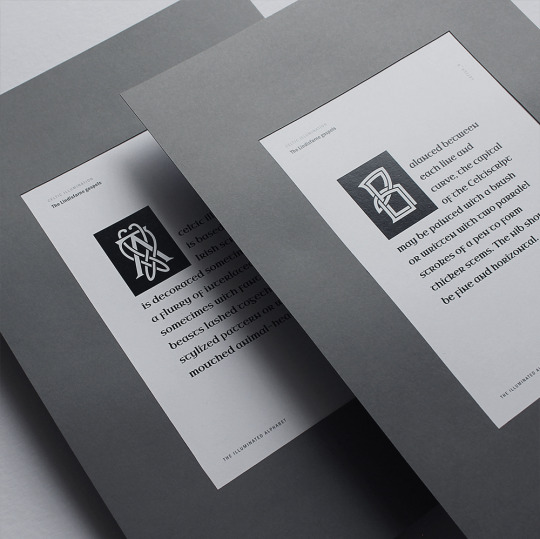
Typoszalon - Iniciálé sorozat
13. Milyen a stílusod?/What is your style like?
Letisztult, tipográfia- és geometria központú.
Clean, typography and geometry centered.
14. Mi az, ami a leginkább feltölt?/What can recharge you the most?
Egy tartalmas beszélgetés, amiben tanulok valamit. Illetve ha sikerül utolérnem magam, minden teendőmmel. :)
A meaningful conversation during which I learn something. Besides that when I can catch up with all of my tasks. :)
15. Hol leszel 10 év múlva?/Where will you be in 10 years?
Szeretnék Magyarországon maradni, és itt hasznos dolgokat alkotni.
I would like to stay here in Hungary and to create useful things here.
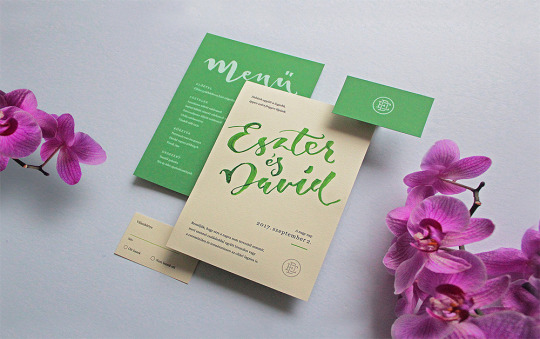
Esküvő arculat
16. Kedvenc évszak?/Favorite season?
Amíg aktívabban sportoltam, egyértelműen a nyarat preferáltam. Minél hosszabbak a nappalok, annál többet tölthettem kint mozgással. A túlságosan hideg hónapokat nem szeretem, de azoknak is megvan a jó oldaluk: télen hamarabb indulhat az éjszakai műszak. :)
When I was more active in sports I preferred summers. The longer the days, the more time I could spend outside. In general, I am not fond of cold months, but those also have their bright sides to them: In winter my night shift can begin sooner. :)
17. Van visszatérő álmod? Miről szól? Esetleg megjelenítetted már valamelyik alkotásodban?/Do you have a reoccurring dream? What is it about? Have you ever realized it in any of your works?
Nincs, de egyszer volt olyan, hogy a reggeli félálomban ugrott be egy logómegoldás, nem bánnám, ha ez visszatérne néha. :D
No, but once during a morning half dream a logo idea came to my mind. I would be more than happy if this occurrence would come back sometimes. :D
18. Ha egyetlen tanácsot kellene adni más, esetleg még kezdő tehetségeknek, mi lenne az?/If you would have to give one piece of advice to a young talent, what would that be?
Ne feledjék, ha tehetségesek, nem csak a lehetőségük, de a felelősségük is több.
Do not forget: If you are talented, more responsibilities come with more opportunities.
---------------------------------------
NÉVJEGY - Szakos Dániel:
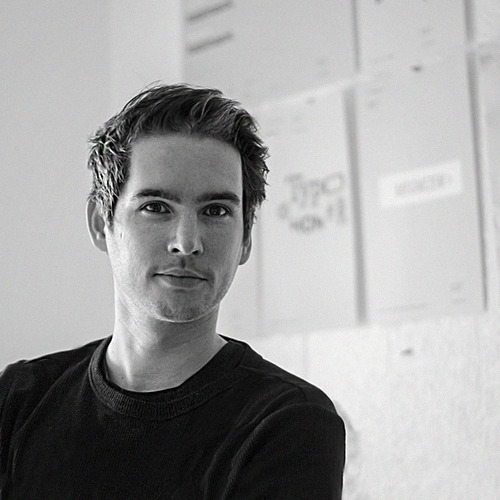
"A Metropolitan Egyetem végzős hallgatója a tervezőgrafika mesterszak betűtervező-tipográfus szakirányán. Saját magát egy igazi typochonderként aposztrofálja: képtelen elmenni egy felirat, vagy logó mellett anélkül, hogy azt ne analizálná. Az egyetem mellett szabadúszó tervezőgrafikusként dolgozik, legszívesebben logókat, arculatokat tervez."
"He is a senior master’s student in graphic design at the Metropolitan University of Budapest, he is majoring in character design- typography. He calls himself a real typochonder: he just cannot pass by a logo or label without analyzing it. Besides finishing his studies, he works as a freelancer graphic designer. He likes to design logos and corporate identity the most.”
/////////////////////////////////////////////////////////////////////////////////
DANI MUNKÁI ITT TEKINTHETŐK MEG/CHECK OUT DANI’S WORK HERE:
https://www.behance.net/szakidani889b2
https://www.instagram.com/szakos_/
https://www.facebook.com/typochonder/
3 notes
·
View notes
Photo

FERENCZY, Károly
Hungarian painter (b. 1862, Wien, d. 1917, Budapest)
Double Portrait (Béni and Noémi)
1908
Oil on canvas, 140 x 153 cm
Magyar Nemzeti Galéria, Budapest
Since Ferenczy had been appointed a teacher, he started to paint more and more studio genres, e.g. still lives, nudes and portraits, and before very long, his interest turned to portraits. "Double Portrait" is a good example which demonstrates his decorative skills. Ferenczy enjoyed painting portraits of groups, some of his works from his late period were portraits of two or three people. His portraits were not just elaborate character portrayals, but compositions: he realized his ideas on composition. "Double Portrait" shows his 18-year-old twins, Noémi and Béni. The picture is rich in authentic details of character. He painted the clothes of his children, Noémi's dress with lace and Béni's grey pullover, with delicate care. Noémi's white dress is a warm patch in front of the blue background. Greys and blacks of Béni's clothes might fade the picture, but the white and red folk art cushion restores balance. The composition is based on silhouette: a blue curtain closes space behind the figures, thus their silhouettes become more definite.
4 notes
·
View notes
Photo





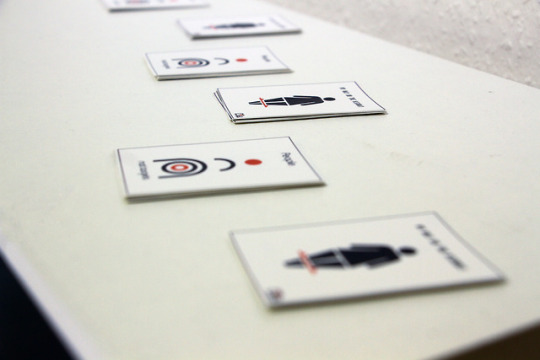
26TH NOVEMBER, 2016. || 2016. NOVEMBER 26.
IN | SIDE | OUT, Eventuell Gallery, Budapest
The first challenge of Not targets, where the analogy, which gave the slogan of the organisation and the campaign named „My way or the Highway” were presented in public.
The core idea, that when a gun crime happens we don’t tend to ask the victim, whether she/he wore a bulletproof vest, led to the sentence „People. Not targets.”, meaning that we talk about people in case of a sexual assault as well.
The campaign „My Way or the Highway” itself was based on an analogy. It’s core idea is, that it searches for similarities between participating in the traffic and in a sexual intercourse. In case of the traffic, we participate in a situation on a regular basis, which is inherently dangerous, and can cause serious injuries, yet we can have a sense of safety. This is due to that set of rules, which is known by every participants, which results in a behaviour shown by everyone. This is the highway code.
On the contrary to this, we don’t have a set of rules in the case of sexual interaction, instead we have grey zoned areas, where people start owing each other something. In case we accept a drink, or we go the flat of somebody, then do we owe that person something? What? When does this depth end, and start? With a smile? With a conversation? With a drink?
Therefore the first step was to verbalize a set of rules, which then was visualized by posters. These rules were basic rules in the context of sexual interactions, similar to those in the highway code.
IN | SIDE | OUT, Eventuell Galéria, Budapest
A Not targets első éles megmérettetése, ahol a szervezet szlogenjét adó analógia, valamint az akkor „My Way or the Highway” kampány is bemutatásra került.
Az alapgondolat, miszerint egy fegyveres bűncselekmény esetén sem azt kérdezzük az áldozattól, hogy miért nem hordott golyóálló mellényt, vezetett a mondathoz, hogy „Emberek. Nem célpontok. (People. Not targets.)”-ról van szó a szexuális bűncselekmények esetében is.
A „My Way or the Highway” szintén egy analógiára felfűzött kampány volt. Alapelve, hogy a közlekedés szituációját hasonlítja össze a szexuális együttléttel. A közlekedés esetében egy olyan helyzetben veszünk részt nap, mint nap, amely alapvetően veszélyes, súlyos sérüléseket lehet szerezni benne, mégis viszonylagos biztonságérzettel tudok benne létezni. Mindez annak a szabályrendszernek köszönhető, amely a résztvevő felek által ismert, és a bizalmi elv alapján követendő magatartást is eredményez. Ez a KRESZ.
Ezzel szemben a szexuális együttlét esetében nincs ilyen kimondott szabályrendszer, helyette szürkezónás, ki nem mondott tartozások vannak. Ha valakitől elfogadunk egy italt, vagy felmegyünk a lakására, akkor tartozunk neki valamivel? Mivel? Meddig tart ez a tartozás, és mikor kezdődik? Egy mosollyal? Egy beszélgetéssel? Egy itallal?
Első körben egy szabályrendszer lett tehát megfogalmazva, poszterekkel vizualizálva, amely hasonló általános érvényű szabályokat fogalmazott meg a szexuális érintkezéssel kapcsolatban, mint ahogy azt a KRESZ teszi a közlekedésben.
0 notes